The China Programme: Policy Supply Characteristics for the Sustainable Promotion of Adolescent Physical Health
Abstract
1. Introduction
2. Study Design
2.1. Framework Construction
- (1)
- Dimension X: Policy tool
- (2)
- Dimension Y: Facilitating elements
- (3)
- Dimension Z: Policy Strength
2.2. Sampling Technique and Procedures
- The policy documents are closely related to the promotion of the Adolescent Physical Health policy, and the content of the documents should directly stipulate and embody the objectives and measures for the physical promotion;
- The full text of the policy texts can be downloaded or accessed;
- The types of policy texts should be laws, regulations, opinions, methods, notices, announcements, and so on;
- The policy texts have been issued at the national level;
- Policy texts must be maintained in a current and non-overlapping manner, meaning that only the policy text currently in effect should be included, excluding any policies that have been repealed. At the same time, in order to ensure the originality of the policy release, the same policy content published by the same policy subject is deleted. According to the above collection steps and screening conditions, 33 valid samples were collected. The selected policy documents are listed in Table 2 (Search terms: ‘‘youth+sports”, “Adolescent+sports”, “Teenagers+Physical healthcar”, “Young people+School sports”, “youth Children+physical health’’).
2.3. Analysis Strategy
- Define the research question and sample selection, and conduct scientific screening and in-depth research on Youth Physical Health policies formulated and implemented at the central level after the reform and opening up.
- Construct the dimensions and framework for Adolescent Physical Health policy analysis.
- Systematically code, classify, and quantitatively analyze the selected policies. In the coding process, a format of “serial number-chapter-clause-statement” is employed. For instance, “2-2-7-1” denotes the first sentence of Article 7 in Chapter 2 of the second policy: ‘The school shall establish a “physical education qualification registration card” for students.’ Furthermore, when the content of a clause encompasses multiple policy instruments simultaneously, subdivision coding continues according to the sequence of clauses presented in the text.
- Evaluate the coding structure for reliability. The results of the coding classification were statistically analyzed using the Kappa coefficient to mitigate any potential influence of coder subjectivity on the coding process. The test outcomes indicated that the Kappa coefficient for each node exceeded 0.810, demonstrating a high level of reliability.
- Analyze the data results and interpret them comprehensively within the framework of policy enactment, allowing optimization strategies to be proposed. A selection of the coding results is presented in Table 3.
2.4. Ethical Criteria
3. Three-Dimensional Analysis of Adolescent Physical Health Policy Texts
3.1. Dimension X: Analysis of Policy Instruments
3.2. Dimension Y: Analysis of Facilitating Elements
3.3. Dimension Z: Analysis of Policy Strength
3.4. Cross-Tabulation Analysis of X, Y, and Z Dimensions
3.4.1. X–Y Dimension
3.4.2. X–Z Dimension
4. Discussion
5. Conclusions
6. Recommendations
7. Research Limitations
Supplementary Materials
Author Contributions
Funding
Institutional Review Board Statement
Informed Consent Statement
Data Availability Statement
Conflicts of Interest
References
- Zhang, Y.; Chai, P.; Huang, X.; Wan, Q.; Tian, X.; Guo, F.; Narayan, A.; Goss, J.; Lu, C. Financing adolescent health in China: How much, who pays, and where it goes. J. Adolesc. Health. 2020, 67, S38–S47. [Google Scholar] [CrossRef] [PubMed]
- Ferreira, F.A.; Santos, C.C.; Palmeira, A.L.; Fernandes, R.J.; Costa, M.J. Effects of Swimming Exercise on Early Adolescents’ Physical Conditioning and Physical Health: A Systematic Review. J. Funct. Morphol. Kinesiol. 2024, 9, 158. [Google Scholar] [CrossRef]
- Moreira, M.T.; Rodrigues, S.; Lima, A.; Ferreira, S.; Fernandes, C.S.; Festas, C. Youth Health Trends in Northern Portugal: Analyzing Diet, Physical Activity, and Body Image. Youth 2024, 4, 1514–1525. [Google Scholar] [CrossRef]
- Wu, L.; Wang, G. Fairness, Trust, and Well-Being Among Young Adults: Evidence from 2021 Chinese General Social Survey (CGSS). Healthcare 2024, 12, 2186. [Google Scholar] [CrossRef]
- Patton, G.C.; Sawyer, S.M.; Santelli, J.S.; Ross, D.A.; Afifi, R.; Allen, N.B.; Arora, M.; Azzopardi, P.; Baldwin, W.; Bonell, C.; et al. Our future: A Lancet commission on adolescent health and wellbeing. Lancet 2016, 387, 2423–2478. [Google Scholar] [CrossRef]
- Li, Y.; Zhang, L.; Yang, S.; Zhang, L.; Yan, J.; Chen, W.; Zeng, H.; Sun, Y.; Zhu, W. Regional Variations in Physical Fitness in Children and Adolescents in Shaanxi Province. Healthcare 2024, 12, 1890. [Google Scholar] [CrossRef]
- Dong, B.; Zou, Z.; Song, Y.; Hu, P.; Luo, D.; Wen, B.; Gao, D.; Wang, X.; Ynag, Z.G.; Ma, Y.H.; et al. Adolescent health and healthy China 2030: A review. J. Adolesc. Health 2020, 67, S24–S31. [Google Scholar] [CrossRef] [PubMed]
- Hu, Y.; Ma, X. Research on the Structure and Characteristics of Adolescent Physical Health Policy in China Based on Policy Text Tool. Sustainability 2023, 15, 8657. [Google Scholar] [CrossRef]
- Wang, Q.; Wang, Y.; Zhou, L.; Nan, Y. Exploring the Impact of School-Based Physical and Perceived Environments on Students’ Physical Activity During Recess: A Case Study of Four Schools in Xi’an, China. Buildings 2024, 14, 3283. [Google Scholar] [CrossRef]
- Lyn, R.S.; Sheldon, E.R.; Eriksen, M.P. Adopting state-level policy to support physical activity among school-aged children and adolescents: Georgia’s SHAPE Act. Public Health Rep. 2017, 132 (Suppl. 2), 9S–15S. [Google Scholar] [CrossRef]
- Liu, H.J.; Niu, J.J. Adolescent Physical Health Promotion Policy Dilemma and Solution Path in China. Sports Cult. Guide 2019, 11, 61–66. [Google Scholar]
- Zhang, W.P.; Wu, A.Y.; Li, Q.D. A study of government attention on Youth Physical Health Health promotion in the new era: A case study of policy texts. China Sport Sci. Technol. 2023, 59, 25–34+61. [Google Scholar] [CrossRef]
- Wang, Y.; Dai, J.; Wen, S.F. Legalisation of Adolescent Physical Health Promotion Policies in the Context of Sports-Education Integration. J. Shenyang Sports Inst. 2022, 41, 50–56. [Google Scholar]
- Wang, X.; Yang, Y.; Kong, L.; Zhong, J.; Yu, H.; Hao, Y. Historical evolution and Policy evolution: From “Enhancing physical fitness” to “integration of physical education”—An analysis of the evolution of sports health promotion policies for children and adolescents in China. China Sports Sci. Technol. 2019, 56, 3–10. [Google Scholar] [CrossRef]
- Guthold, R.; Stevens, G.A.; Riley, L.M.; Bull, F.C. Global trends in insufficient physical activity among adolescents: A pooled analysis of 298 population-based surveys with 1.6 million participants. Lancet Child Adolesc. Health 2020, 4, 23–35. [Google Scholar] [CrossRef] [PubMed]
- Vlad, I.; Oldridge-Turner, K.; Klepp, K.I.; Rutter, H.; Mathisen, J.R.; Helleve, A.; Fismen, A.S.; Harbron, J.; Hendricks, G.; Malczyk, S.; et al. The development of the NOURISHING and MOVING benchmarking tools to monitor and evaluate national governments’ nutrition and physical activity policies to address obesity in the European region. Obes. Rev. 2023, 24, e13541. [Google Scholar] [CrossRef]
- Ott, M.A.; Rosenberger, J.G.; McBride, K.R.; Woodcox, S.G. How Do Adolescents View Health? Implications for State Health Policy. J. Adolesc. Health 2011, 48, 398–403. [Google Scholar] [CrossRef]
- Robertson-Wilson, J.E.; Dargavel, M.D.; Bryden, P.J.; Giles-Corti, B. Physical activity policies and legislation in schools: A systematic review. Am. J. Prev. Med. 2012, 43, 643–649. [Google Scholar] [CrossRef] [PubMed]
- Xun, C.; Yang, T. Evolution, Logical Transformation and Optimisation of Youth Physical Health policy in New China. J. Chengdu. Inst. Phys. Educ. 2023, 49, 104–110. [Google Scholar] [CrossRef]
- Shi, C.Y.; Han, P.P. Quantitative evluation and empirical study of Youth Physical Health policy based on PMC index model. Sports Sci. 2022, 43, 73–85. [Google Scholar] [CrossRef]
- Tian, S.; Xu, W.; Liu, Y.; Liao, M.; Zhou, M. Research on the formulation of the Working Regulations for Youth Sports under the background of the implementation of the New Sports Law. J. Tianjin Sports Coll. 2023, 38, 639–646. [Google Scholar] [CrossRef]
- Jing, Z.; Feng, H. Selection and application of China environmental sustainability policy instrumental: A quantitative analysis based on “Dual Carbon” policy text. Front Environ. Sci. 2024, 12, 1418253. [Google Scholar] [CrossRef]
- Liu, D.; Chen, J.; He, Y. Quantitative analysis of three-dimensional texts of major science popularisation policies in China—An examination based on available policy texts from 1994–2022. Sci. Soc. 2024, 14, 116–136. [Google Scholar] [CrossRef]
- Ackah-Jnr, F.R.; Appiah, J.; Addo-Kissiedu, K.; Kwao, A. Early Childhood Education Policy and Practice in Ghana: Document and Evidence Analysis with McDonnell and Elmore’s Framework of Policy Instruments. Multidiscip. J. Educ. Res. 2022, 12, 295–321. [Google Scholar] [CrossRef]
- Zhang, Z.; Bai, Y. Research on Whether Quality Policies Can Promote the High-Quality Development of China’s Manufacturing Industry and Its Configuration Paths in the Context of Sustainable Development. Sustainability 2024, 16, 9539. [Google Scholar] [CrossRef]
- He, B.; Li, Z.; Du, X.; Wei, X.; Li, J. What lessons and experiences can be learned from China for practicing low carbon city: A policy instrument perspective. Energy Strat. Rev. 2024, 55, 101539. [Google Scholar] [CrossRef]
- Rothwell, R.; Zegveld, W. Reindustrialization and Technology; Longman Group Limited: London, UK, 1985; pp. 83–84. [Google Scholar]
- Sun, J.Y.; Luo, J.P.; Zhang, Q.W. A quantitative study on the policy of family doctor contracting service in China based on a three-dimensional analysis framework. Chin. Fam. Med. 2024, 27, 3100–3107. [Google Scholar]
- He, A.N.; An, N.; Guo, Z.M. Three-dimensional review and analysis of Chinese medicine health insurance policy—Based on policy tools, policy issues and policy strength. China Med. Insur. 2024, 8, 44–53. [Google Scholar]
- Long, R.; Cui, W.; Li, Q. The Evolution and Effect Evaluation of Photovoltaic Industry Policy in China. Sustainability 2017, 9, 2147. [Google Scholar] [CrossRef]
- Neal, S.M.; Greenberg, M.J. Identifying policy alternatives to enable the virtual establishment of a veterinarian–client–patient relationship. J. Feline. Med. Surg. 2024, 26, 1098612X231224167. [Google Scholar] [CrossRef]
- Kondracki, N.L.; Wellman, N.S.; Amundson, D.R. Content analysis: Review of methods and their applications in nutrition education. J. Nutr. Educ. Behav. 2002, 34, 224–230. [Google Scholar] [CrossRef] [PubMed]
- Graneheim, U.H.; Lindgren, B.M.; Lundman, B. Methodological challenges in qualitative content analysis: A discussion paper. Nurse Educ. Today 2017, 56, 29–34. [Google Scholar] [CrossRef]
- Department of Physical Education, Health and Art Education, Ministry of Education. Eighth National Youth Physical Fitness and Health Survey. China Sch. Health 2021, 42, 1281–1282. [Google Scholar]
- Cheng, M.; Wang, S. A quantitative study of policy texts on Adolescent Physical Health in China: A case study of 263 policy texts since the Reform and Opening Up. Sports Res. Educ. 2021, 36, 40–48. [Google Scholar] [CrossRef]
- Li, C.; Shi, S.S. Precision governance: A paradigm shift in the governance of youth physical fitness and health promotion. J. Shanghai Inst. Phys. Educ. 2019, 43, 1–6+37. [Google Scholar] [CrossRef]
- Wang, D.; Yao, Y.; Zhao, L. A Study on Promoting Adolescent Physical Health Based on the Green Mode. J. Nanjing Sport Inst. 2023, 22, 52–60. [Google Scholar] [CrossRef]
- Mao, Z.; Ding, T.; Lin, X. Objectives and strategies for strengthening and improving school sports in China in the new era-Analysis and comparison of seven important documents on school sports work since 2007. J. Beijing Sport Univ. 2021, 44, 2–12. [Google Scholar] [CrossRef]
- Wang, J.X.; Shen, K.Y.; Fang, Q.H. Youth physical education and training in China under the ‘double reduction’ policy: Opportunities, dilemmas and strategies. J. Xi’an Inst. Phys. Educ. 2022, 39, 240–248. [Google Scholar] [CrossRef]
- Shi, W.; Xu, S. Research on legal regulation of youth physical fitness monitoring in China. Phys. Cult. Guide 2020, 11, 58–63. [Google Scholar]
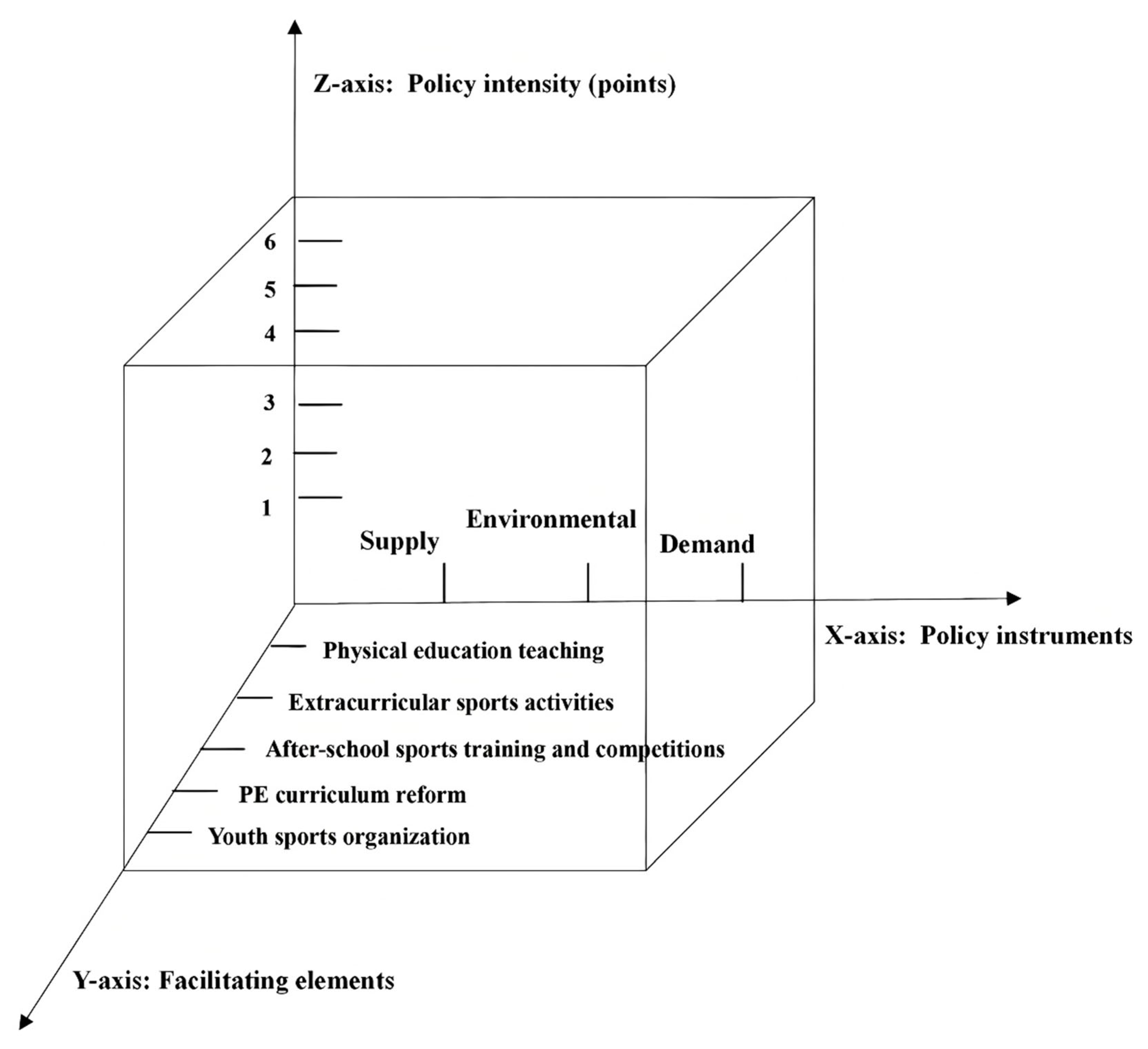

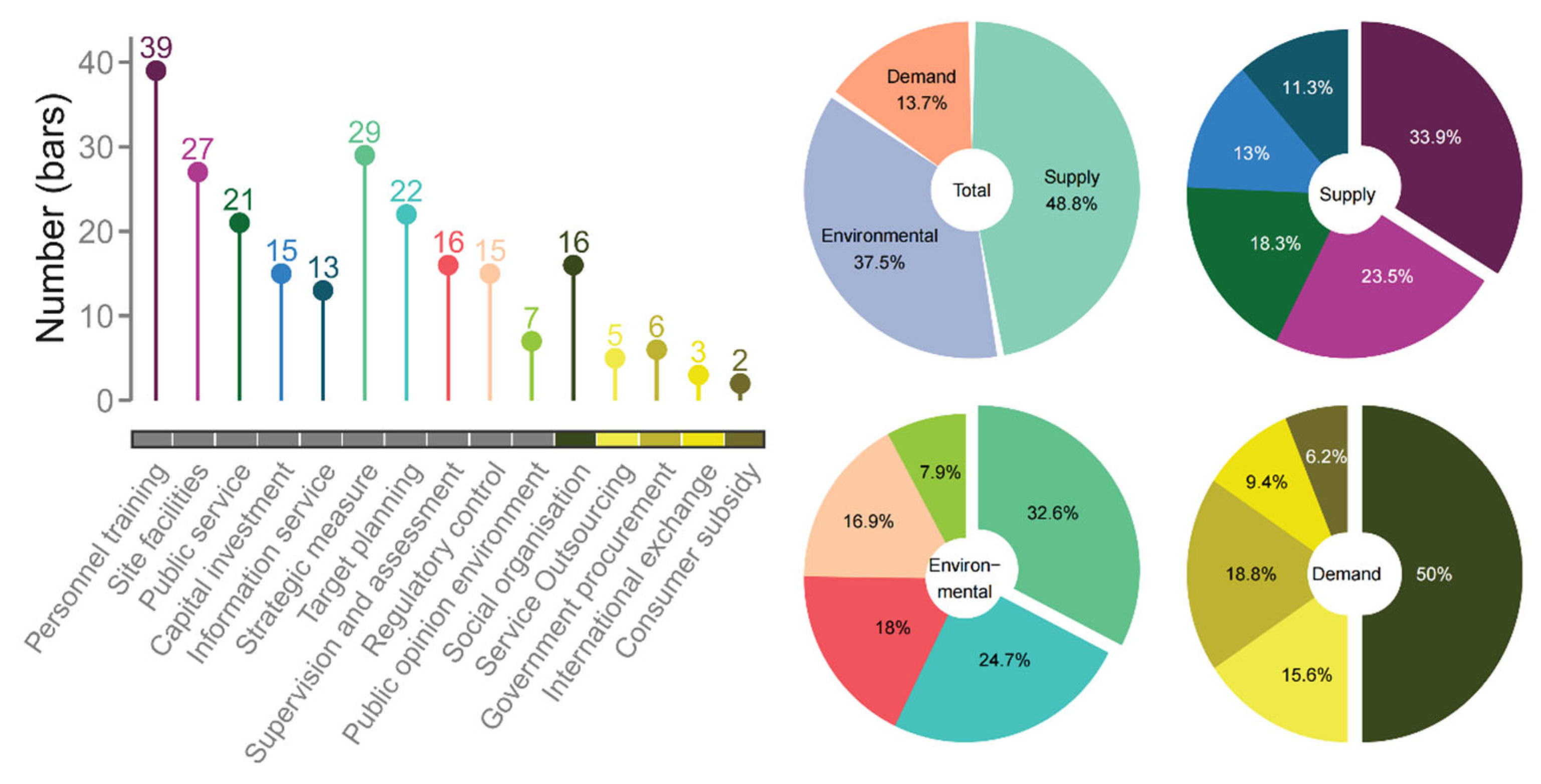

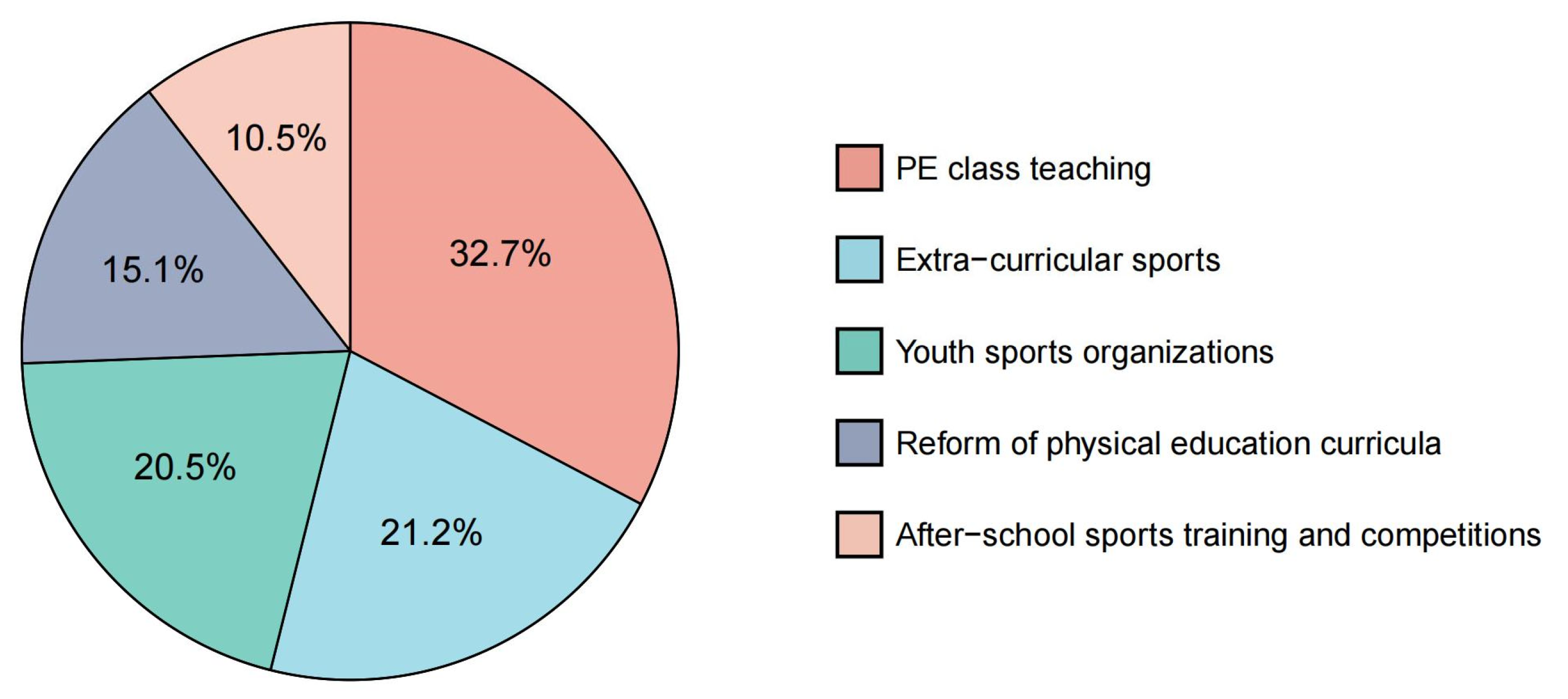

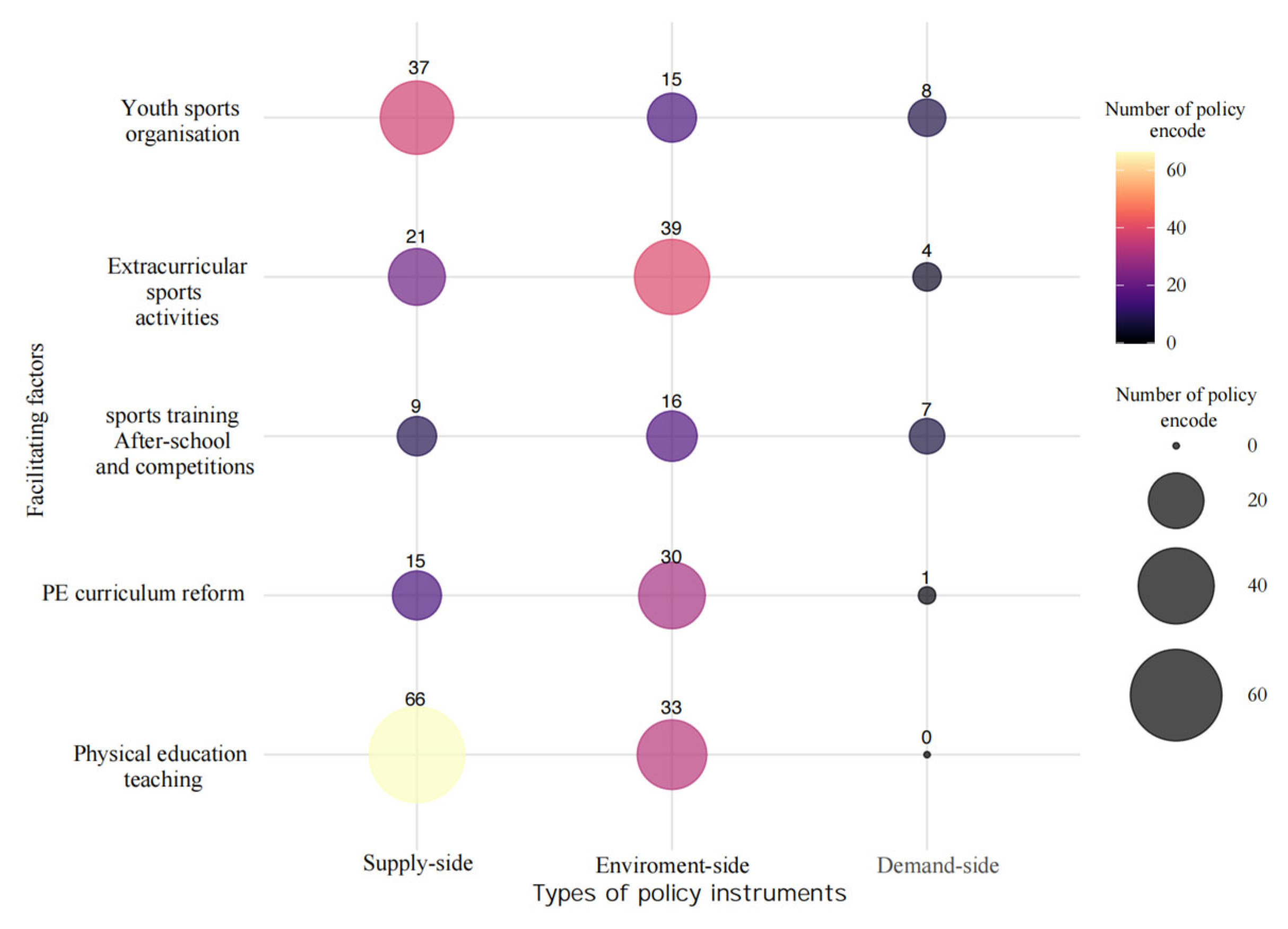
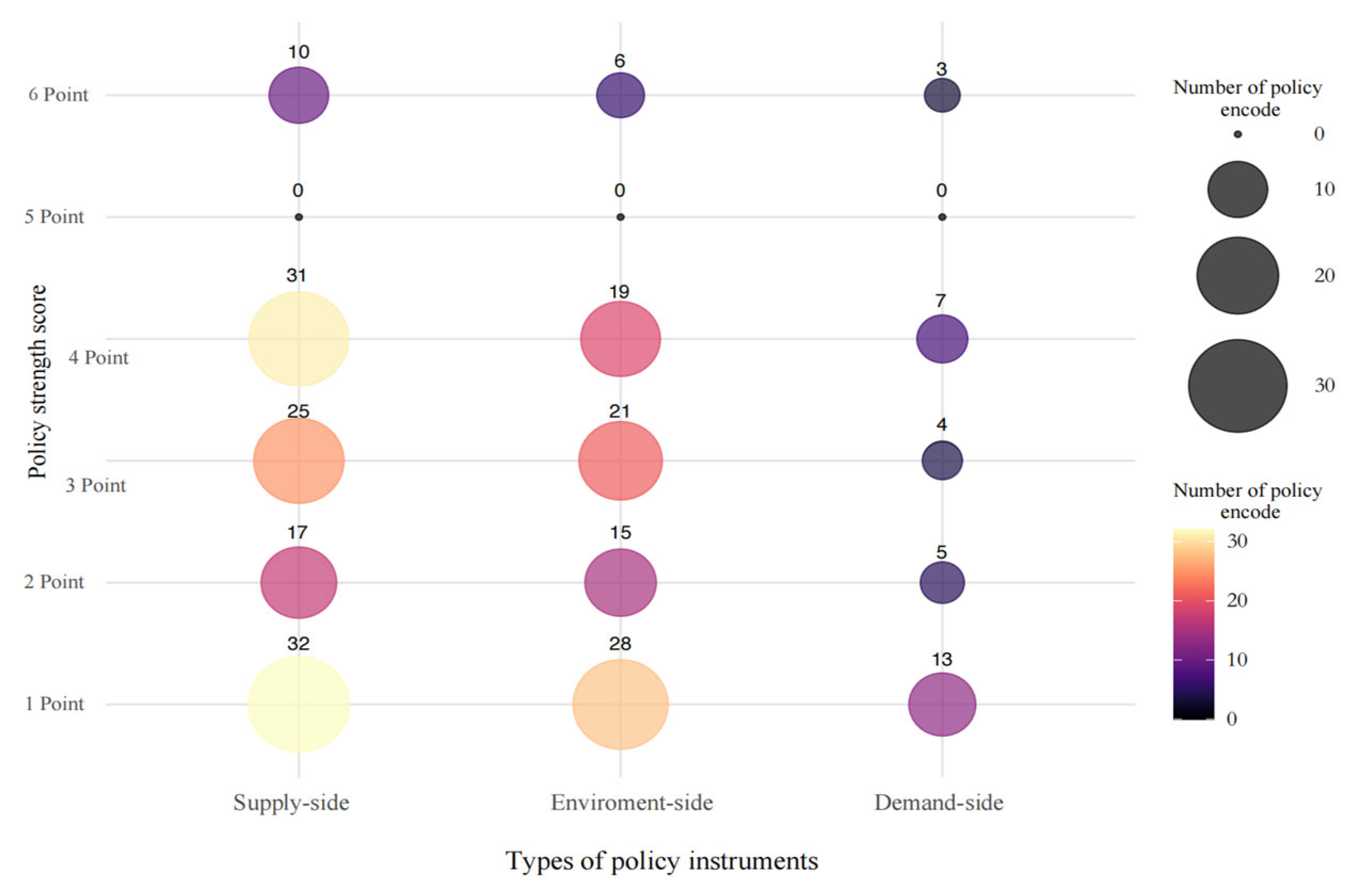
| Evaluation Criteria | Score (Points) |
|---|---|
| Issued by the Standing Committee of the National People’s Congress | 6 |
| Jointly issued by the Central Committee of the Communist Party of China and the State Council | 5 |
| Issued by the State Council | 4 |
| Joint issuance by three or more ministries | 3 |
| Two parts jointly issued | 2 |
| Separate communications from ministries | 1 |
| Number | Policy Name | Issuing Unit | Date of Issue |
|---|---|---|---|
| 1 | Petition to Further Create New Horizons in Sports | State Council (PRC) | October 1983 |
| 2 | Measures for the Implementation of Physical Education Qualification Standards for Secondary School Students | State Education Commission (SEC) | May 1991 |
| 3 | Opinions on Further Strengthening Physical Education and Health Work in Schools and Improving Students’ Health Level | National Sports Commission | September 1992 |
| …… | …… | …… | …… |
| 31 | Sports Law of the People’s Republic of China (Revised 2022) | Standing Committee of the National People’s Congress | June 2022 |
| 32 | Work Programme of the Action to Enhance Fitness Facilities for All (2023–2025) | State General Administration of Sport | May 2023 |
| 33 | Implementation Views on Enhancing and Improving the Work of Youth School Football in the New Period | Ministry of Education | February 2024 |
| Code | Name | Text Analysis Module | Policy Tools |
|---|---|---|---|
| 1-2-1-1 | Petition to further create new horizons in sports | Several provinces and cities in the country should include sports interactions in their dealings | International exchange |
| 2-2-7-1 | Measures for the Implementation of Physical Education Qualification Standards for Secondary School Students | Schools are required to establish a ‘sports pass register’ for students | Information service |
| 9-6-1-1 | A national programme of sunshine sports for hundreds of millions of students launched | Vigorously promote sunshine sports and widely disseminate the concept of health | Public opinion environment |
| 10-3-1-1 | Further strengthening school sports work and effectively improving the health of our young people | Seriously implement the Compulsory Education Act and the Physical Education Act, and conduct regular inspections of their implementation | Oversight and assessment |
| 20-4-9-1 | Strengthening school sports to boost kids’ overall physical and mental health | Physical education educators and researchers should be systematically distributed across all regions in accordance with established standards | Personnel training |
Disclaimer/Publisher’s Note: The statements, opinions and data contained in all publications are solely those of the individual author(s) and contributor(s) and not of MDPI and/or the editor(s). MDPI and/or the editor(s) disclaim responsibility for any injury to people or property resulting from any ideas, methods, instructions or products referred to in the content. |
© 2025 by the authors. Licensee MDPI, Basel, Switzerland. This article is an open access article distributed under the terms and conditions of the Creative Commons Attribution (CC BY) license (https://creativecommons.org/licenses/by/4.0/).
Share and Cite
Zhang, J.; Zhang, Z.; Huang, M. The China Programme: Policy Supply Characteristics for the Sustainable Promotion of Adolescent Physical Health. Sustainability 2025, 17, 494. https://doi.org/10.3390/su17020494
Zhang J, Zhang Z, Huang M. The China Programme: Policy Supply Characteristics for the Sustainable Promotion of Adolescent Physical Health. Sustainability. 2025; 17(2):494. https://doi.org/10.3390/su17020494
Chicago/Turabian StyleZhang, Jiajia, Zonghao Zhang, and Meirong Huang. 2025. "The China Programme: Policy Supply Characteristics for the Sustainable Promotion of Adolescent Physical Health" Sustainability 17, no. 2: 494. https://doi.org/10.3390/su17020494
APA StyleZhang, J., Zhang, Z., & Huang, M. (2025). The China Programme: Policy Supply Characteristics for the Sustainable Promotion of Adolescent Physical Health. Sustainability, 17(2), 494. https://doi.org/10.3390/su17020494





